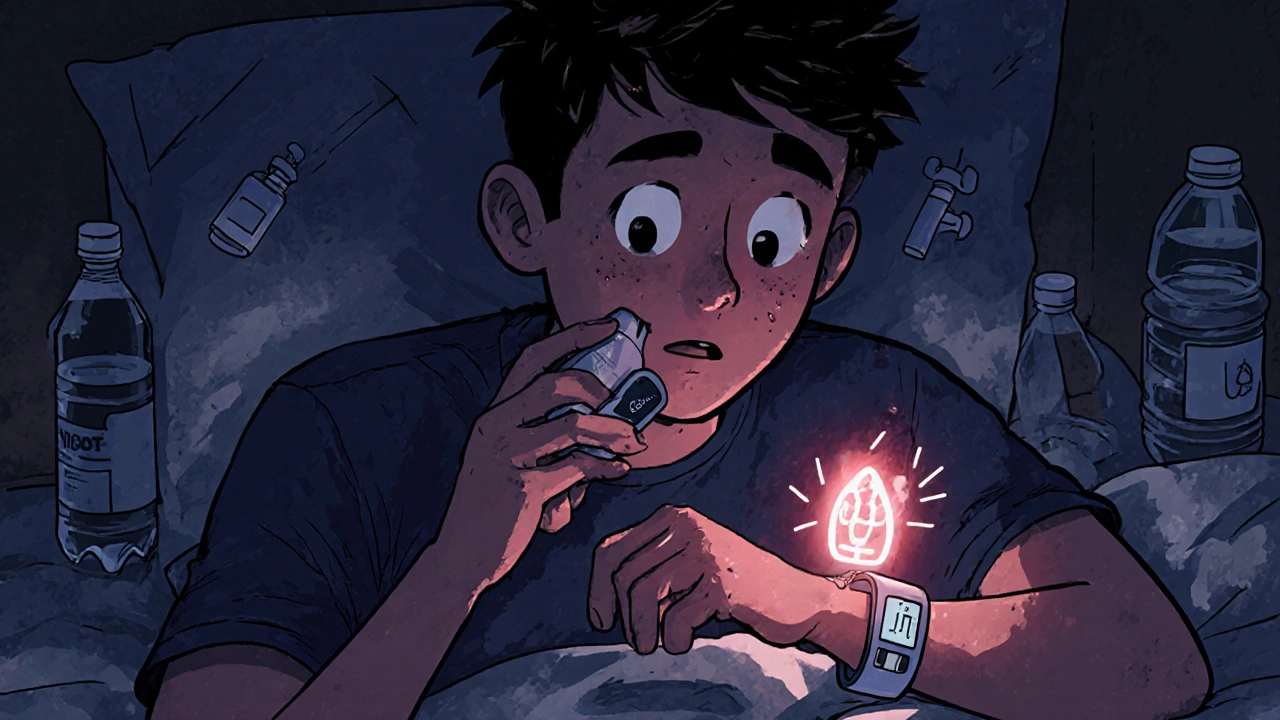Diabetic Ketoacidosis: Causes, Signs, and What You Need to Know
When your body doesn’t have enough insulin, it starts breaking down fat for energy—and that can lead to diabetic ketoacidosis, a life-threatening condition where the blood becomes too acidic due to high levels of ketones. Also known as DKA, it most often hits people with type 1 diabetes but can also occur in type 2 if insulin is missed or during severe illness. This isn’t just high blood sugar—it’s your body in crisis mode, flooding your system with acids that can shut down organs if not treated fast.
Insulin deficiency, the core trigger of diabetic ketoacidosis means your cells can’t use glucose for fuel. So your liver dumps more sugar into your blood, and your fat cells churn out ketones as a backup energy source. Too many ketones = acidic blood = trouble. Blood sugar, often over 250 mg/dL during DKA is a red flag, but you can have DKA even with lower sugar levels if insulin is severely low. It’s not just about the number—it’s about the imbalance.
Common signs? Excessive thirst, frequent urination, nausea, vomiting, stomach pain, confusion, and that fruity-smelling breath—like nail polish remover. These aren’t vague symptoms. They’re your body screaming for help. If you’re diabetic and feel this way, don’t wait. Test for ketones with a urine strip or blood meter. If they’re high, call your doctor or go to the ER. Delaying treatment can lead to coma or death.
What triggers it? Missing insulin doses, infections like pneumonia or UTIs, heart attacks, strokes, or even undiagnosed diabetes. Sometimes, it’s stress, new medications, or alcohol. People who don’t know they have diabetes can show up in the ER with DKA as their first sign. That’s why knowing the symptoms matters—even if you’ve never been diagnosed.
You’ll find posts here that connect directly to this. Some compare diabetes supplements like Diabecon to standard meds, while others warn about drug interactions that could worsen your condition. There’s guidance on how to spot dangerous side effects early, how compounded meds might play a role in personalized care, and how insurance rules can affect your access to insulin and testing supplies. These aren’t random articles—they’re pieces of a larger puzzle: staying safe when your body’s balance is fragile.
If you or someone you care about has diabetes, understanding diabetic ketoacidosis isn’t optional. It’s the difference between a quick fix and a hospital stay. The information below gives you real, practical insights—not theory, not fluff. Just what you need to recognize the signs, avoid the triggers, and know when to act.

- 13 Comments
Diabetic ketoacidosis is a life-threatening emergency caused by insulin deficiency. Learn the warning signs-from extreme thirst to fruity breath-and what happens in hospital treatment. Early action saves lives.
